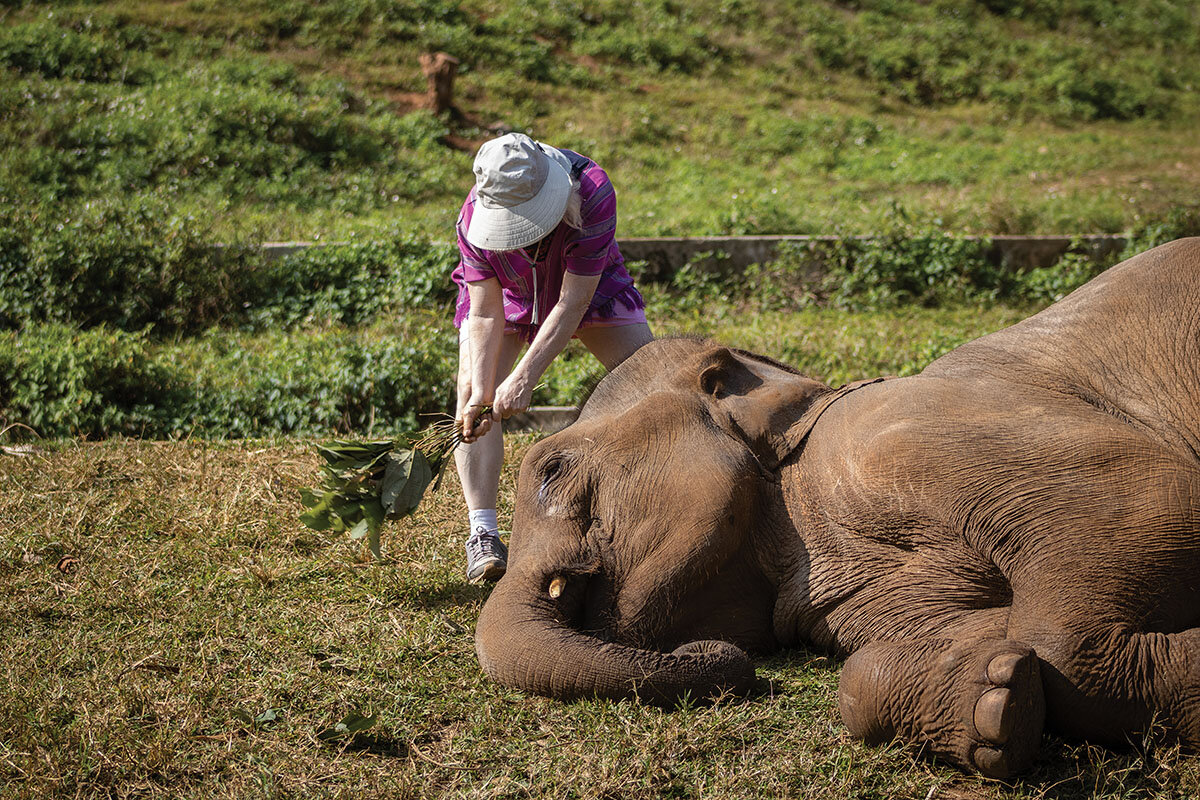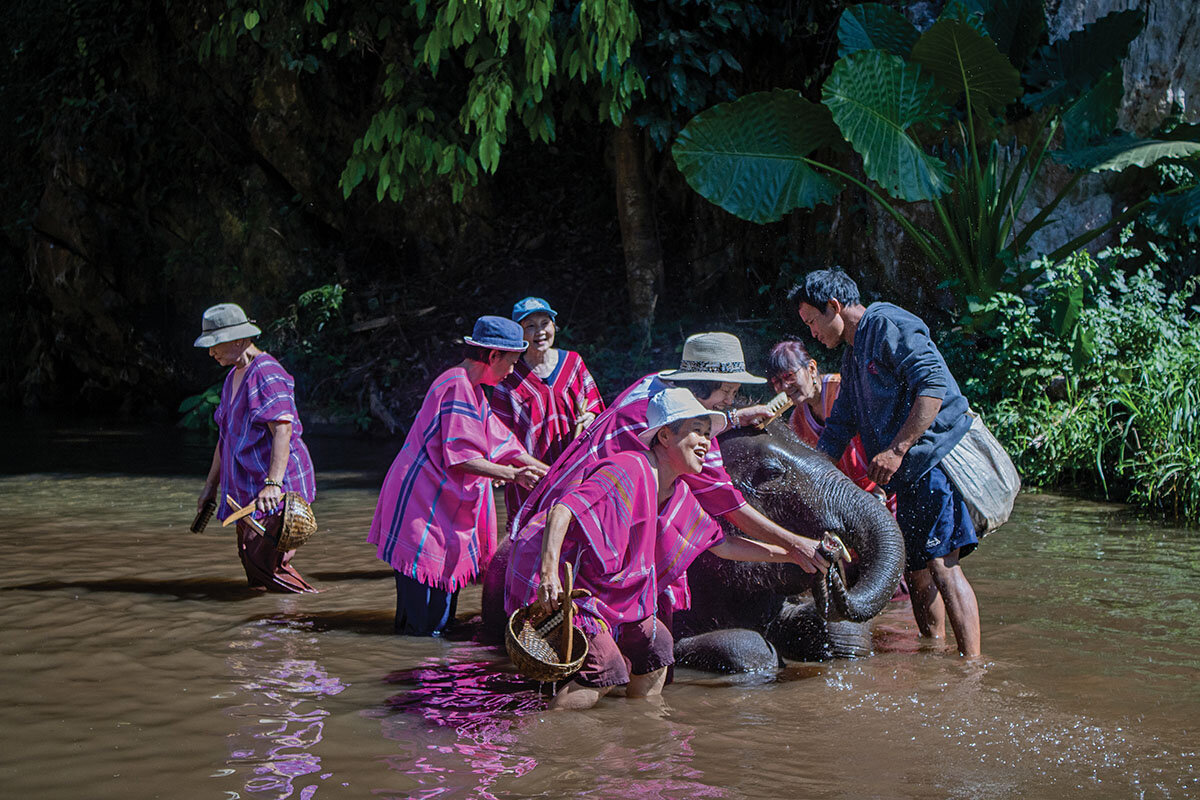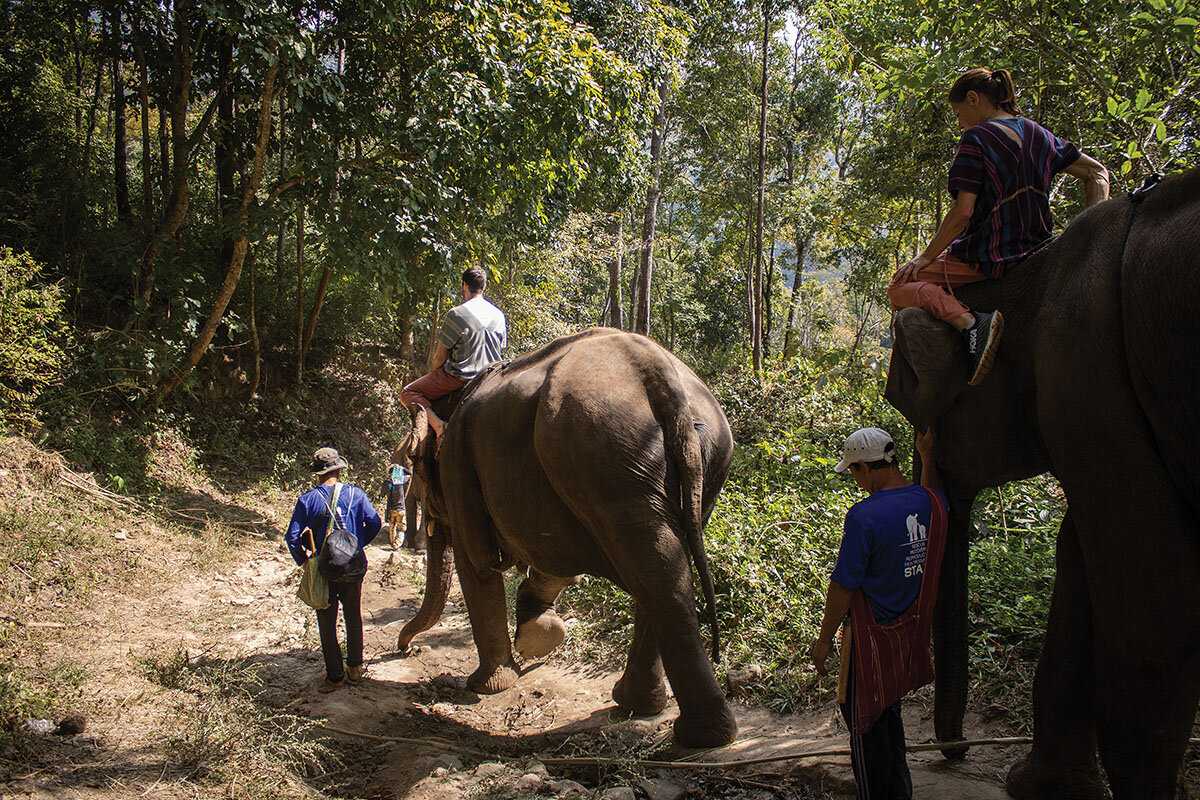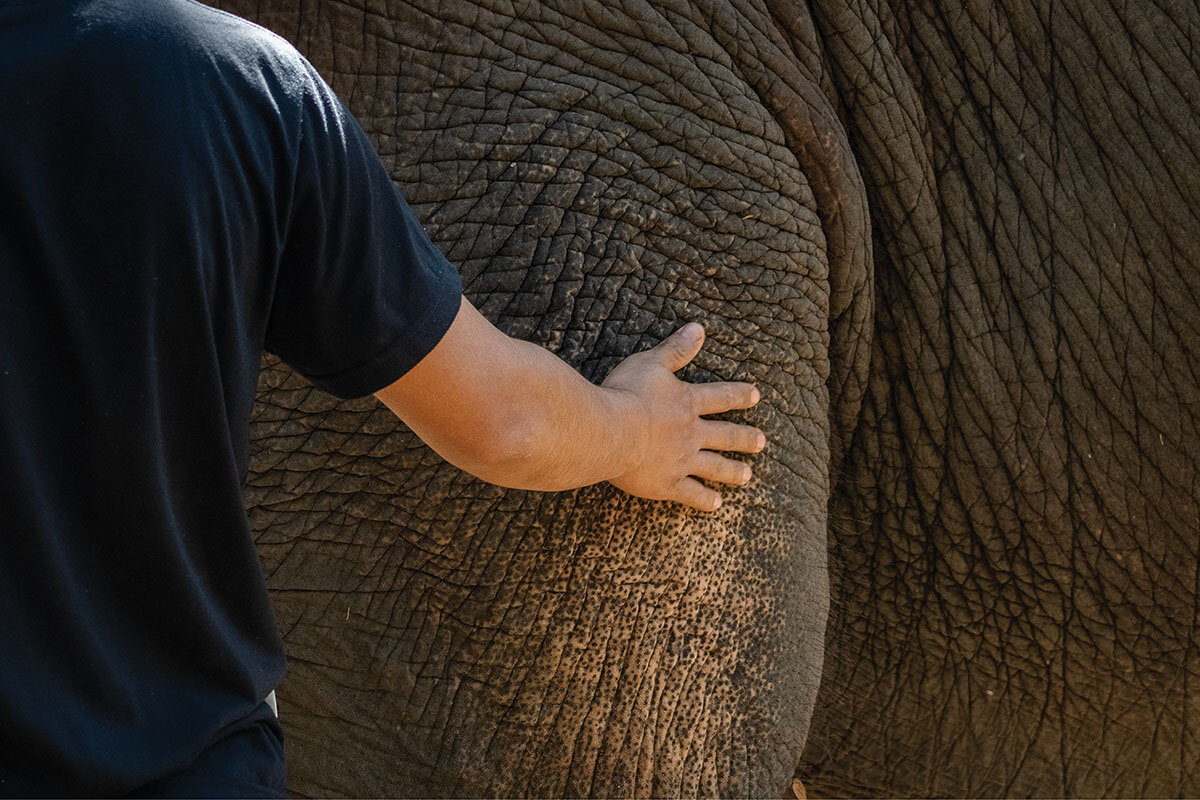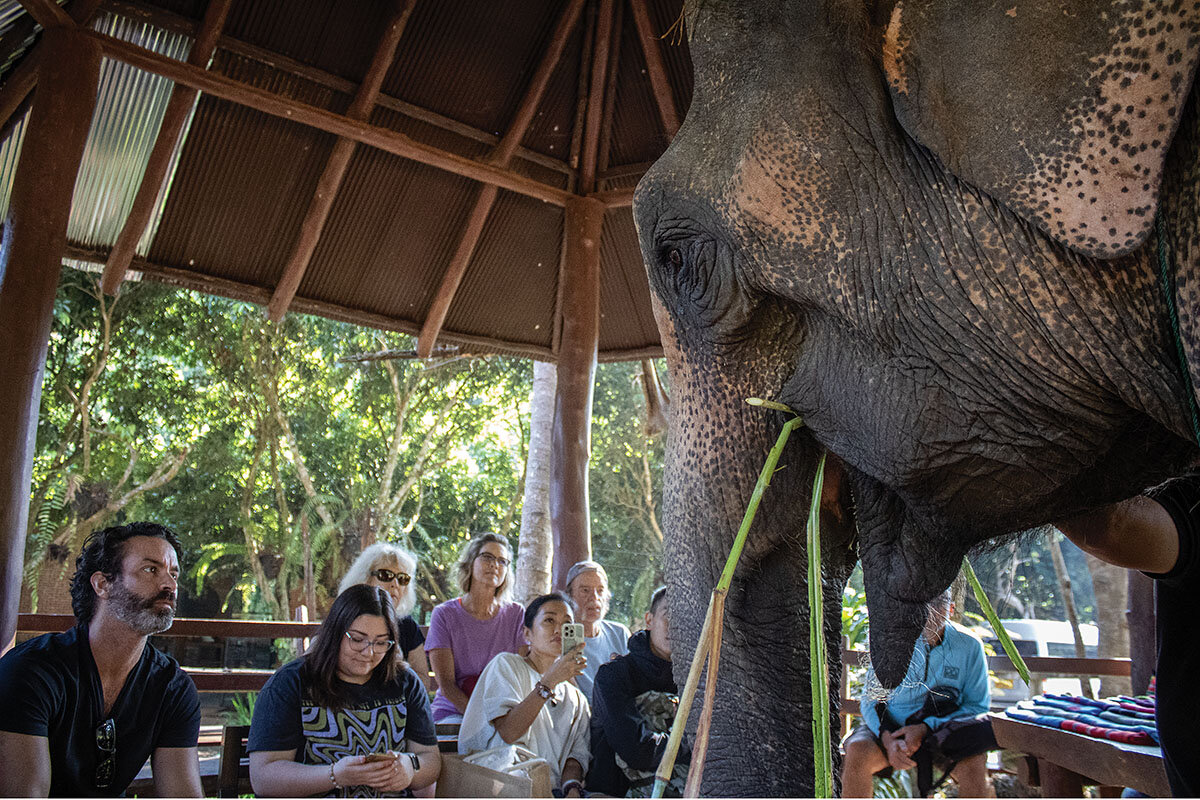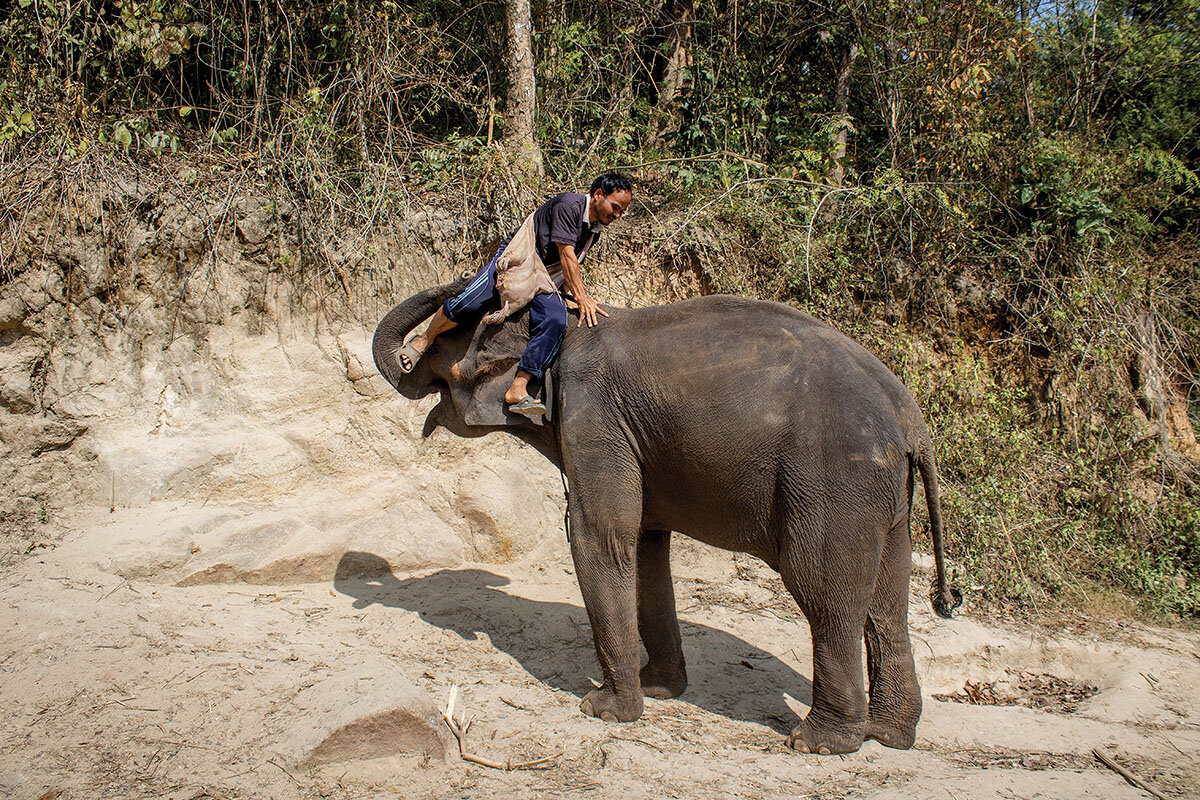In Pictures: Two views of elephant tourism in Thailand
Loading...
| CHIANG MAI, THAILAND
The history of people and elephants here goes back thousands of years. Centuries ago, Thai kings rode these giants into battle. Elephants were used in harvesting timber until Thailand banned logging in national forests in 1989, prompting many owners to turn to tourism.
Then came the dramatic halt caused by the pandemic. Elephants are expensive to keep (they can eat more than 300 pounds of food a day). Most elephant attractions closed their doors, and many elephant owners – who rented out their animals to tourism operators – brought them back to their villages, some walking along the road for days.
As tourism rebounds, many elephants have been brought back to work, renewing concerns about how to properly care for them.
At parks like ChangChill, operators believe that captive elephants are best cared for when they don’t interact with tourists. This means setting out food for the elephants and letting visitors observe them from a distance.
Others, like Patara Elephant Farm and Thai Elephant Home, believe riding and bathing the elephants is not harmful as long as the animals’ health is monitored and they’re not overworked. Either way, the industry around Thailand’s nearly 4,000 captive elephants is changing. “I want to see standards that elephant camps follow to ensure that all the elephants have good welfare,” says Dr. Pakkanut Bansiddhi, lecturer at the Department of Companion Animals and Wildlife Clinics at Chiang Mai University. “The tourist or any travel organization could use this set of standards to guide them to where to go.”
Editor's note: This photo essay was produced with support from the Round Earth Media program of the International Women’s Media Foundation. Porntawan Maneechote contributed reporting.



